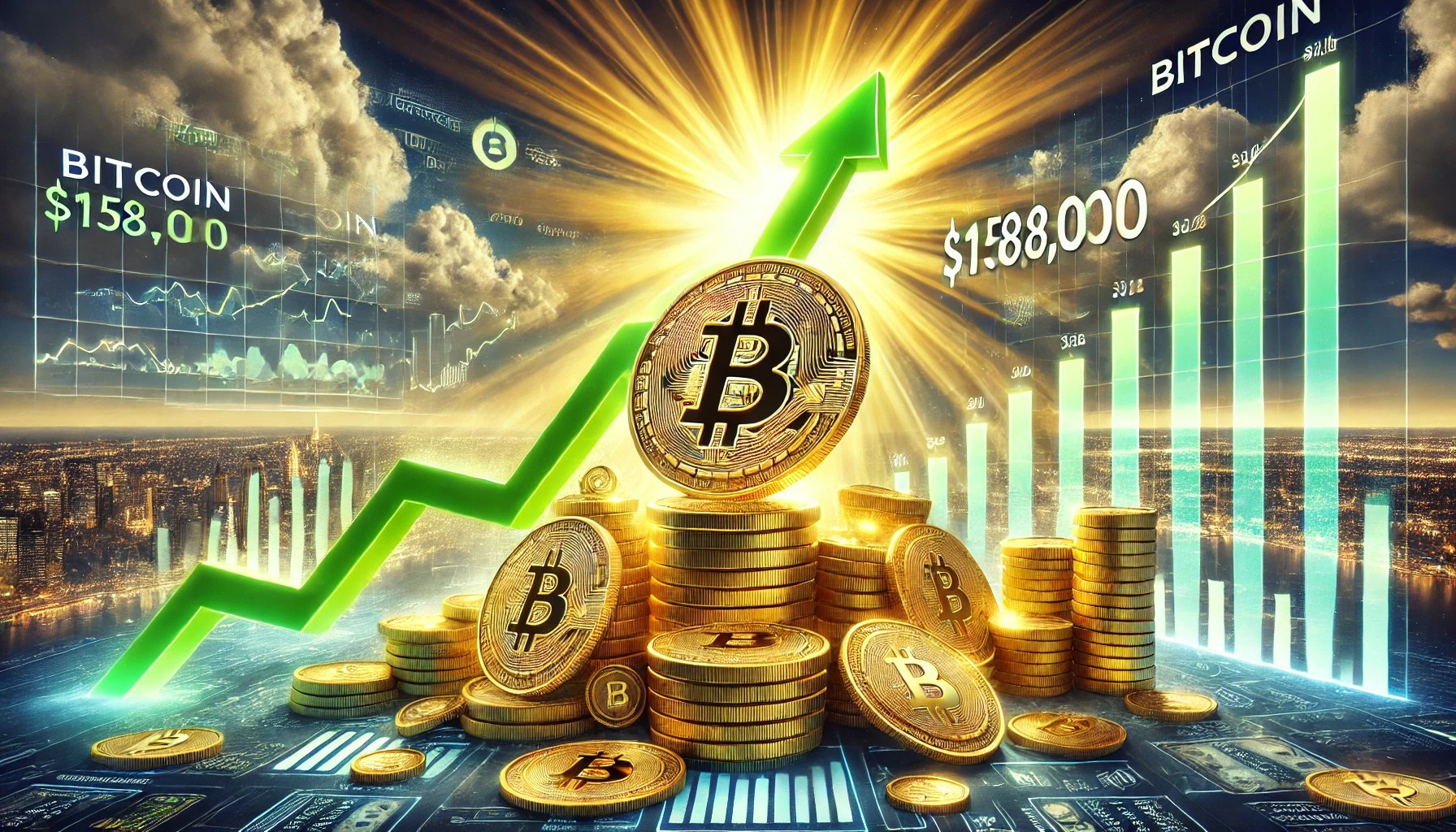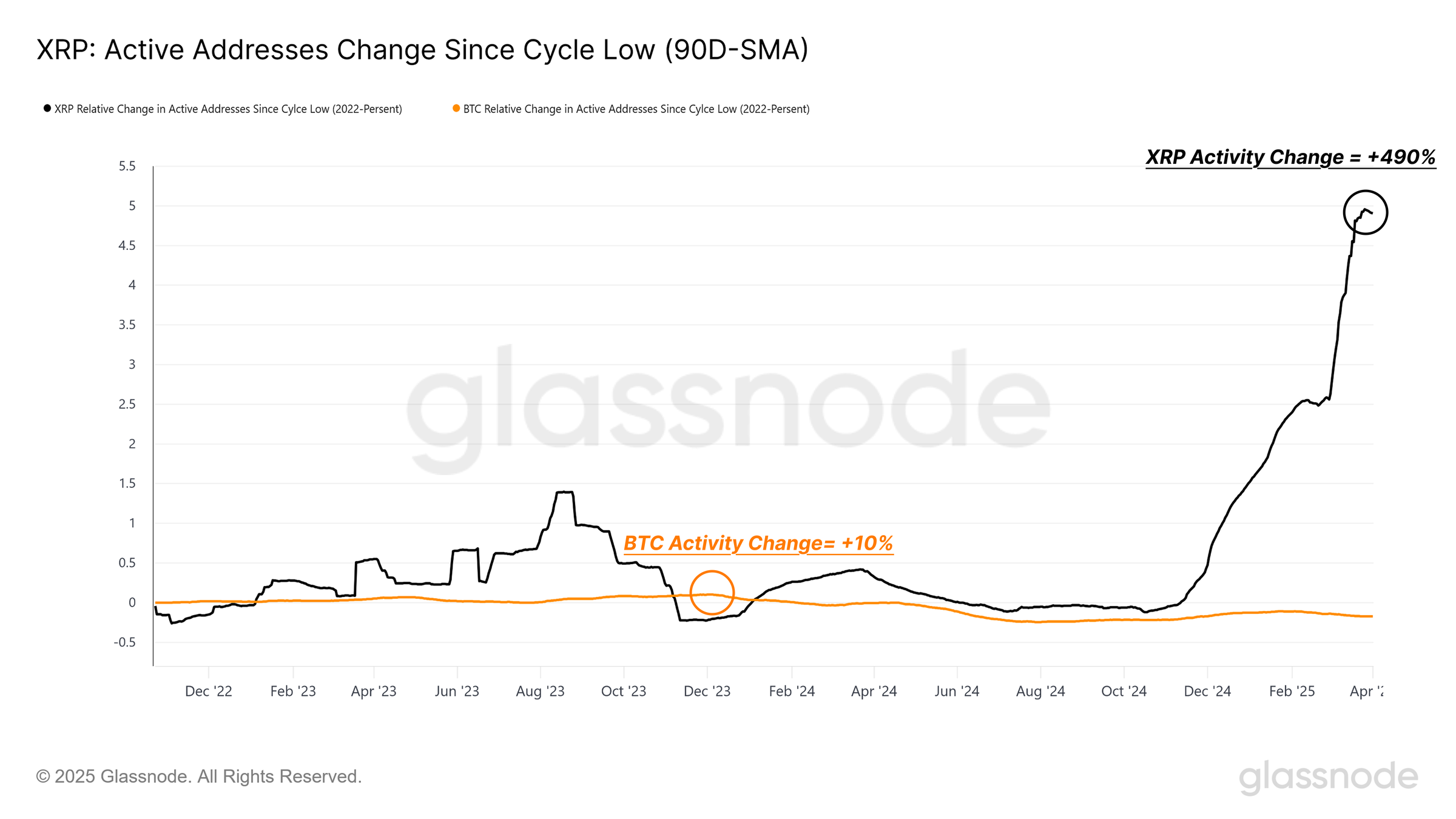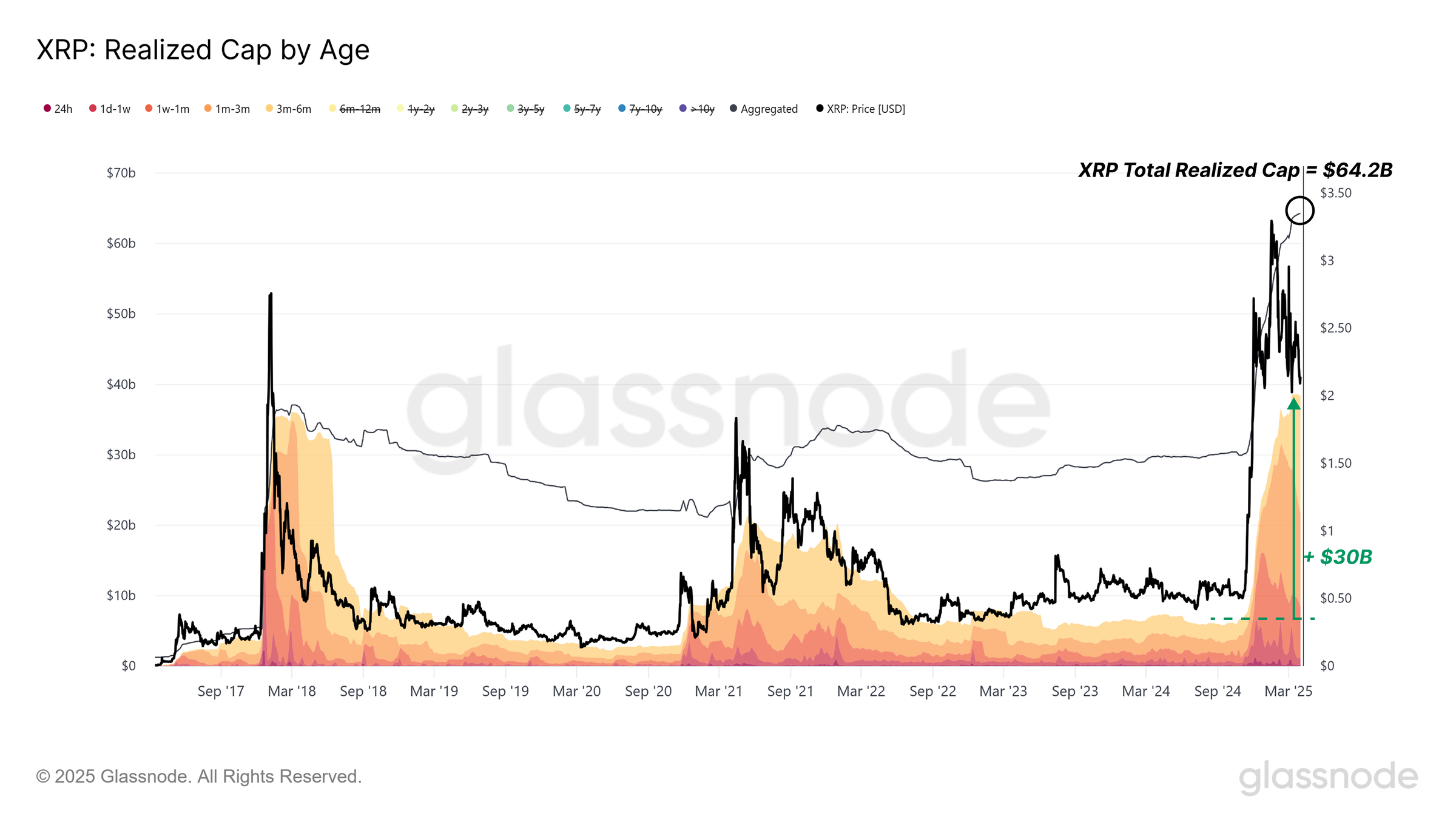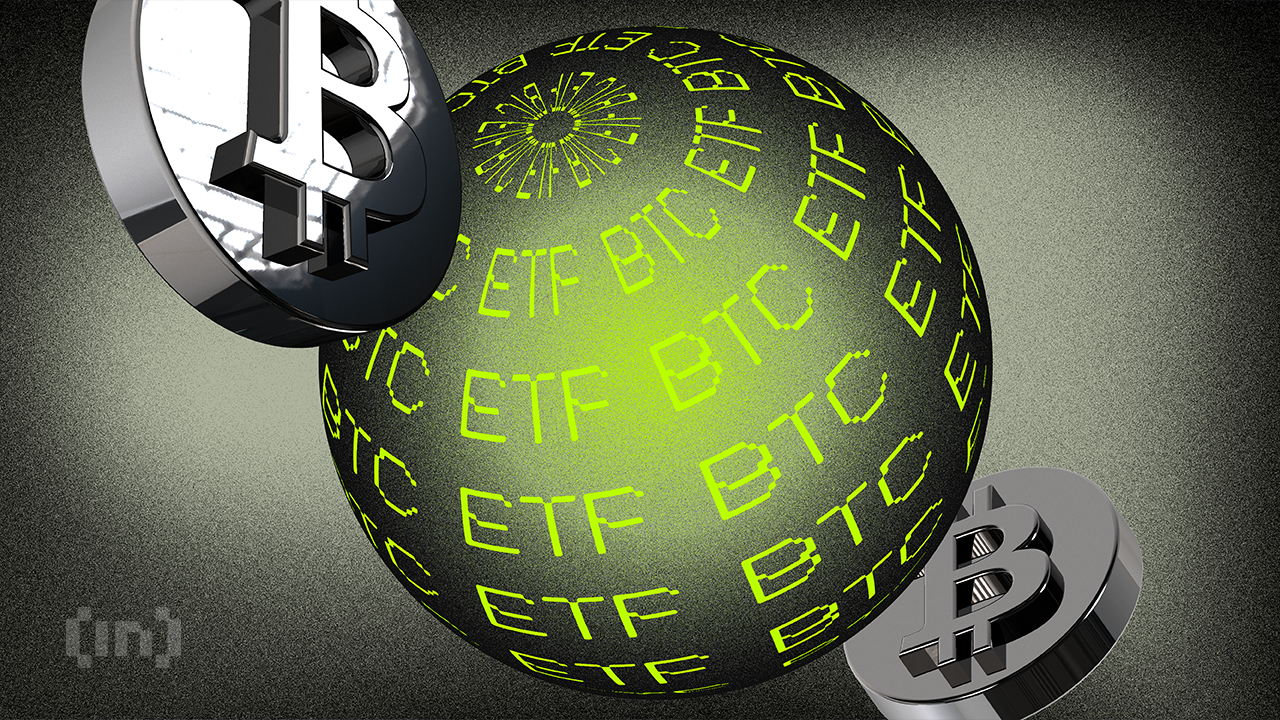Bitcoin
Bitcoin Bull Pennant Still In Motion With $158,000 Price Target, Here’s When

Bitcoin’s technical analysis is setting up the stage for an explosive move above $150,000. The cryptocurrency’s current price action is flashing various patterns on the price charts, most of them bullish. Furthermore, these patterns are playing out across multiple timeframes, giving analysts different angles to examine in terms of the cryptocurrency’s future outlook.
According to a bullish pennant pattern that is playing out on the monthly timeframe, Bitcoin is gearing up for a move towards $158,000.
Bitcoin Bull Pennant Still In Motion
One of the key patterns being observed is a bullish pennant that is unfolding on the monthly timeframe. This formation, often seen after a period of strong upward movement, suggests that Bitcoin is building momentum for its next big leap. Interestingly, this pattern was social media platform X by crypto analyst Titan of Crypto. Using a Bitcoin/U.S. Dollar monthly candlestick chart, the analyst highlighted a bull pennant formation that has been playing out since September 2023.
The “pole” of the pattern was established through an extended rally that began in Q4 2023 and culminated in Bitcoin reaching a new all-time high in March 2024. Following this, the price of BTC entered a consolidation phase which has lasted for the past six months. This consolidation phase has been characterized by a series of lower highs bounded between upper and lower trendlines, which has created a clear pennant shape.
A successful breakout of the pattern to the upside would relate to another prolonged rally on the monthly timeframe. According to Titan Of Crypto, a bullish breakout would catapult Bitcoin to the moon. In terms of a price target, he highlighted a $158,000 price by May 2025. To reach this level, BTC would need to break above resistances and foray into new price territories. Particularly, Bitcoin would need to rally by about 170% from the current price between the next six to eight months.
#Bitcoin Bull Pennant Still in Play: $158,000 🎯
A massive bull pennant is forming on the monthly timeframe.
If it plays out #BTC could be catapulted to the moon 🌕 pic.twitter.com/KLb6bfk1wj
— Titan of Crypto (@Washigorira) September 14, 2024
Bullish Patterns In Abundance
According to another analysis by Titan Of Crypto on the daily candlestick, Bitcoin has reclaimed both the Tenkan and Kijun indicators, which are key components of the Ichimoku Cloud. In addition to this, the Relative Strength Index (RSI) has successfully broken through a multi-month resistance trendline that suggests the buying pressure is starting to mount.
Bitcoin is also beginning to push back above the Kumo Cloud in the Ichimoku system, although it is starting to experience a brief retest. If the breakout is confirmed, it could usher in renewed bullish momentum in the coming days for an upward move.
At the time of writing, Bitcoin is trading at $58,827 and has fallen 2.3% in 24 hours. After spending the entirety of the weekend trading above it, Bitcoin has broken below the $60,000 price level again. However, the $60,000 level remains crucial for BTC.
Featured image created with Dall.E, chart from Tradingview.com
Bitcoin
Why Are Retail Investors Turning to XRP Over Bitcoin?

Retail investors are showing a growing preference for XRP (XRP) over Bitcoin (BTC), according to recent on-chain data from Glassnode. The data highlights a dramatic 490% surge in XRP’s quarterly average of daily active addresses. In comparison, Bitcoin only saw a modest 10% increase since the 2022 cycle low.
This sharp contrast suggests that speculative retail demand is fueling XRP’s resurgence. Meanwhile, Bitcoin’s rally remains predominantly institutional-led.
How Are Retail Investors Impacting XRP’s Growth Compared to Bitcoin?
In their latest newsletter, Glassnode highlighted the differing paths of these two major cryptocurrencies. Despite both assets achieving similar price gains—roughly 5x to 6x from their 2022 cycle lows—their trajectories reveal distinct investor behaviors.
“Since the 2022 cycle low, the quarterly average of daily active addresses for XRP has jumped by +490%, compared to just 10% for Bitcoin. This stark contrast suggests that retail enthusiasm has been attracted by XRP, thus providing a mirror for speculative appetite in the crypto space,” the newsletter read.

According to Glassnode, Bitcoin’s growth has been steady. Meanwhile, the launch of spot ETFs or the US elections triggered a period of significant upward movement. In fact, Bitcoin hit an all-time high (ATH) just before President Trump’s inauguration.
Contrarily, Glassnode noted that XRP’s rally has been characterized by a sudden breakout from December 2024, driven by retail speculation.
“During this recent surge, XRP’s realized cap nearly doubled from $30.1 billion to $64.2 billion, reflecting a substantial inflow of capital,” Glassnode added.
Nevertheless, the surge also raises some cautionary signals, as it appears to be driven more by recent investments than by long-term, sustained demand. Glassnode observed a rapid concentration of wealth among new investors, with those entering the market in the past six months accounting for nearly half—around $30 billion—of this surge.

Moreover, the share of XRP’s realized cap held by addresses younger than six months rose from 23% to 62.8% in a short period. Further insights from Google Trends data revealed that interest in XRP is predominantly concentrated in Europe and the United States, with significantly less search activity in Asia and Africa.
This geographic disparity suggested that XRP’s retail-driven surge may be tied to specific market dynamics in Western regions, potentially influenced by regulatory clarity or community-driven hype.
“When viewed together with the heavy retail participation, this sharp uplift in new holders raises caution signs, where many investors are likely to be vulnerable to downside volatility, given their now elevated cost basis,” Glassnode remarked.
While XRP’s retail appeal is evident, the sustainability of its rally remains uncertain. Glassnode’s report indicates that the capital inflow has slowed since late February 2025, hinting at a cooling of retail speculation.
Moreover, the Realized Loss/Profit Ratio has been steadily decreasing since January 2025. This suggested that investors are seeing fewer profits and facing larger losses.
“Given the retail-dominated inflows and largely concentrated wealth in relatively new hands, this alludes to a condition where retail investor confidence in XRP may be slipping, and this may also be extended across the broader market,” the newsletter highlighted.
Therefore, Glassnode cautioned that the XRP demand may have already peaked. The firm recommended exercising caution until more definitive signs of recovery appear.
Disclaimer
In adherence to the Trust Project guidelines, BeInCrypto is committed to unbiased, transparent reporting. This news article aims to provide accurate, timely information. However, readers are advised to verify facts independently and consult with a professional before making any decisions based on this content. Please note that our Terms and Conditions, Privacy Policy, and Disclaimers have been updated.
Bitcoin
Why Recency Bias Is Amplifying Fear Around Bitcoin’s Price

The Crypto Fear and Greed Index dropped to 25 yesterday, signaling “Extreme Fear” in the cryptocurrency market. Yet, an analyst suggests that the current panic might be exaggerated, largely driven by recency bias.
This comes as Bitcoin is navigating market volatility triggered by broader macroeconomic conditions. The leading cryptocurrency has fallen 11.4% year to date, reflecting the wider sentiment of fear and uncertainty.
Is the Recency Bias Inflating Fear Around Bitcoin’s Price?
In the latest X (formerly Twitter) post, analyst Lark Davis highlighted an interesting trend in the Crypto Fear and Greed Index. This sentiment gauge measures market emotions from 0 (Extreme Fear) to 100 (Extreme Greed).
On April 3, it plummeted to a low of 25, indicating heightened anxiety among investors, even though Bitcoin was trading around $80,000. In fact, the latest value of 28 also indicated substantial fear among market participants.

Nonetheless, according to Davis, the sentiment was out of place, given Bitcoin’s price performance. He noted that the index’s decline contrasted with market conditions six months prior. Despite Bitcoin trading at $65,000, the index showed a neutral reading then.
“This is what’s called “recency bias,” and you can leverage it,” he wrote.
For context, recency bias refers to the tendency of investors or traders to give more weight to recent events or information when making decisions while disregarding longer-term trends or data. This psychological bias often leads to overreaction to short-term market movements, such as a sudden price spike or a crash.
“So that’s why we’re seeing higher fear readings at today’s $80,000, than yesterday’s $65,000,” David remarked.
He suggested that the fear seen in the market is not entirely justified and that reactions to short-term fluctuations are often more extreme than necessary.
This coincides with Bitcoin continuing to see fluctuations amid President Trump’s tariff plans and fears of a potential recession. While it remains relatively steady compared to traditional markets, the decline in Bitcoin’s value has still raised doubts about its stability and long-term potential.
Notably, Michael Saylor, chairman of Strategy (formerly MicroStrategy), highlighted that short-term volatility doesn’t reflect Bitcoin’s long-term potential.
“Bitcoin is most volatile because it is most useful,” he said.
Saylor explained that Bitcoin’s volatility is largely due to its liquidity and 24/7 availability, Which means it is more susceptible to rapid sell-offs during market panics. However, Saylor reiterated that while Bitcoin behaves like a risk asset in the short term, its long-term value is unaffected by these fluctuations, reinforcing its role as a store of value.
Meanwhile, Arthur Hayes, the former CEO of BitMEX, provided another perspective on the ongoing market conditions.
“Some of y’all are running scurred, but I love tariffs,” Hayes stated.
According to Hayes, global economic imbalances will eventually be corrected. While short-term market pain is inevitable, Hayes predicts that the solution will likely involve printing more money, which he views as beneficial for Bitcoin.
“The $ is weakening alongside foreigners selling US tech stocks and bringing money home. This is good for BTC and gold over medium term,” he forecasted.
His comments align with BeInCrypto’s recent report on the inverse correlation between the US Dollar Index (DXY) and BTC. Thus, a decline in the former could benefit the latter.

For now, Bitcoin continues to see modest losses. Over the past week, it has declined by 4.5%. Meanwhile, the coin has shed 1.0% of its value over the past day. At the time of writing, Bitcoin was trading at $82,855.
Disclaimer
In adherence to the Trust Project guidelines, BeInCrypto is committed to unbiased, transparent reporting. This news article aims to provide accurate, timely information. However, readers are advised to verify facts independently and consult with a professional before making any decisions based on this content. Please note that our Terms and Conditions, Privacy Policy, and Disclaimers have been updated.
Bitcoin
Why ETF Issuers are Buying Bitcoin Despite Recession Fears

According to new data from Arkham Intelligence, three major Bitcoin ETF issuers are acquiring huge amounts of BTC today. The ETFs had $220 million in net inflows yesterday, and the issuers are potentially expecting a spike in demand.
Although Bitcoin has seen wild fluctuations over the past couple of days, institutional investors might show more confidence in the leading cryptocurrency than the TradFi market.
Why are ETF Issuers Buying Bitcoin?
The crypto market experienced wider liquidations today, and fears of a broader recession are circulating heavily. Since President Trump imposed much higher tariffs than expected, crypto is mirroring the TradFi stock market with notable downturns.
However, the US spot Bitcoin ETFs market shows that institutional demand might rebound in the short term.
“Donald Trump just tariffed the entire world. So? Grayscale is buying Bitcoin, Fidelity is buying Bitcoin, Ark Invest is buying Bitcoin,” Arkham Intelligence noted on social media.
Arkham Intelligence, a prominent blockchain analysis platform, is not the only one noticing this trend in Bitcoin ETFs. Although Bitcoin’s price has been very volatile over the last two days, it has consistently managed to return to a rough baseline.
The asset’s long-short ratio was 0.94 last week, and it shifted to 1 today. This signals a move toward more balanced investor positioning.
Previously, with 48.5% long positions against 51.5% short positions, the market exhibited a slight bearish tilt. Today, the equal split—with 50.5% long positions—signals that investors have neutralized their stance, reducing the bearish bias.

This balanced positioning suggests that market sentiment has stabilized, potentially reflecting increased uncertainty about near-term price movements. Bitcoin investors may now be awaiting clearer market signals before committing to a more directional bias.
Additionally, the Bitcoin ETFs have performed well in another key area. According to data from SoSo Value, the entire asset category had net inflows of $220 million yesterday.
Granted, Trump made his Liberation Day announcements after the stock market closed yesterday, but that’s still a very impressive amount of growth.
It is currently unclear exactly what impact today’s market turmoil had on the Bitcoin ETFs as an asset category. However, Arkham’s data suggests that these issuers are making notable investments in BTC.
If nothing else, it suggests that these firms are anticipating an uptick in demand in the near future. There are still many unanswered questions about tariffs, crypto markets, and the global economy as a whole.
If ETF inflows continue throughout this week, it will reflect institutional investors’ betting on BTC to remain more stable and sustainable than TradFi markets amid recession concerns.
Disclaimer
In adherence to the Trust Project guidelines, BeInCrypto is committed to unbiased, transparent reporting. This news article aims to provide accurate, timely information. However, readers are advised to verify facts independently and consult with a professional before making any decisions based on this content. Please note that our Terms and Conditions, Privacy Policy, and Disclaimers have been updated.
-

 Market19 hours ago
Market19 hours agoBitcoin’s Future After Trump Tariffs
-

 Market23 hours ago
Market23 hours agoIP Token Price Surges, but Weak Demand Hints at Reversal
-

 Market20 hours ago
Market20 hours agoEDGE Goes Live, RSR Added to Roadmap
-

 Altcoin24 hours ago
Altcoin24 hours agoBinance Issues Key Announcement On StakeStone TGE; Here’s All
-

 Altcoin23 hours ago
Altcoin23 hours agoMovimiento millonario de Solana, SOLX es la mejor opción
-

 Ethereum22 hours ago
Ethereum22 hours agoEthereum Trading In ‘No Man’s Land’, Breakout A ‘Matter Of Time’?
-

 Bitcoin22 hours ago
Bitcoin22 hours agoBlackRock Approved by FCA to Operate as UK Crypto Asset Firm
-

 Market22 hours ago
Market22 hours agoHBAR Foundation Eyes TikTok, Price Rally To $0.20 Possible




















